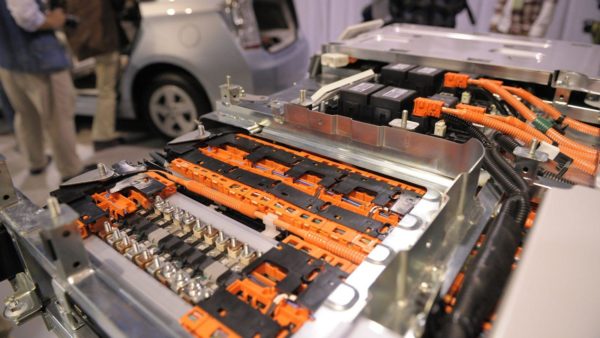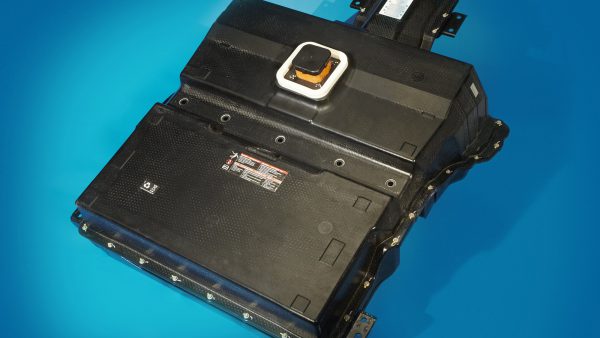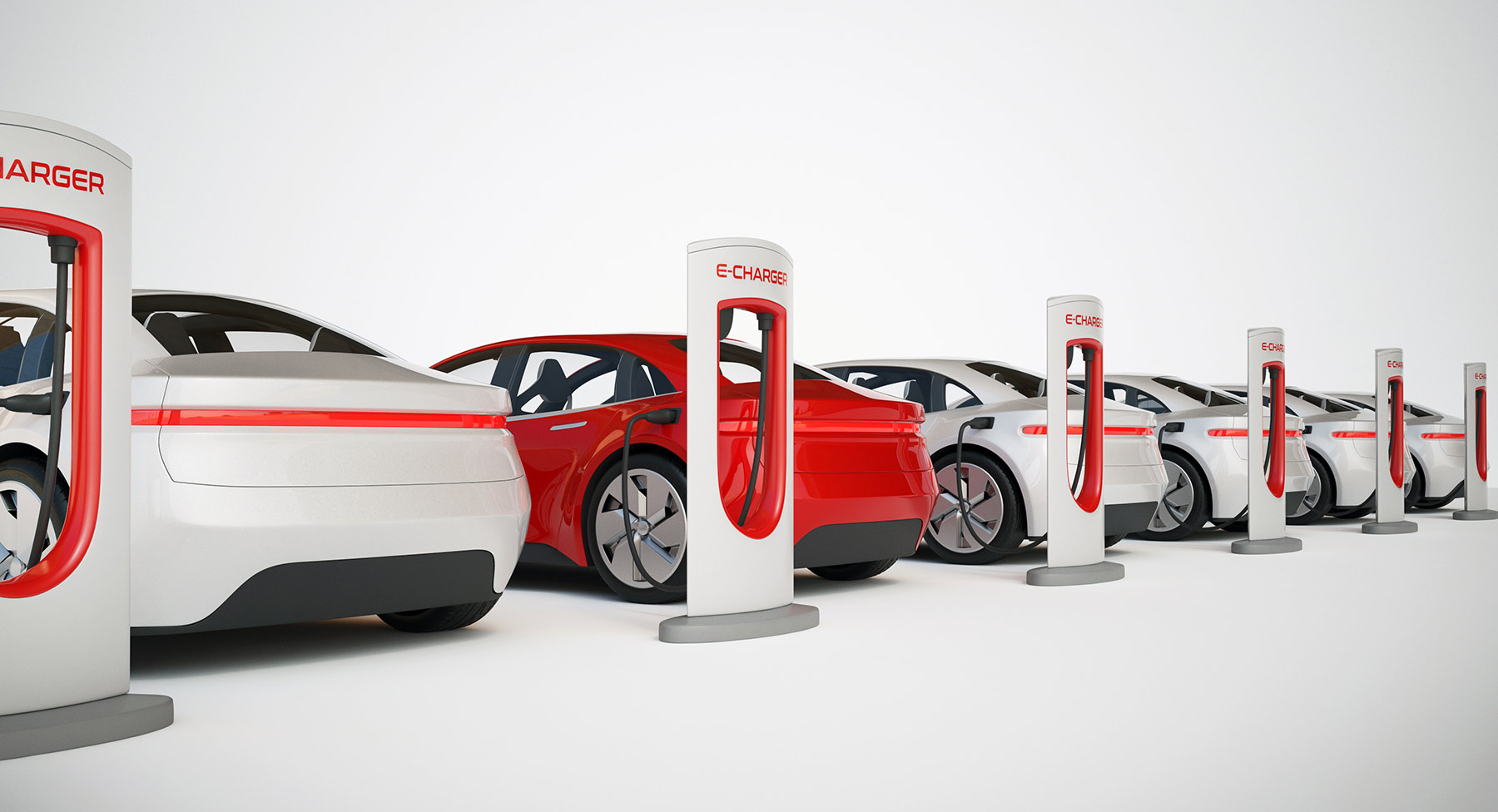Since 2010, alternative powertrain options such as battery electric vehicles (BEVs) and plug-in hybrid electric vehicles (PHEVs) have begun to penetrate the automotive market while federal agencies have increased investments in electric/hybrid vehicles and battery technologies.
Acceptance for EVs continues to rise as CO2 emissions standards drive increased electrification and hybridization. By 2030, electrified propulsion vehicles are expected to meet or surpass internal combustion engines in vehicle sales.33 Vehicle electrification provides a variety of opportunities for advanced plastics and polymer composites in the areas that follow:
Hybridization
Design Impacts

The proliferation of vehicle battery systems with higher energy densities creates a greater need for increased occupant protection from fire hazards.
Opportunities for Advanced Plastics and Polymer Composites
Flame-retardant polymers, including adhesives and fabrics, could help reduce the risk of fires from spreading.
Engineered thermoplastics, which can meet the growing demand for electrical connectors and housings, can be designed to withstand the high heat and electrical currents generated by EVs.34
The 2016 Chevrolet Volt featured an all-plastic battery pack which enabled a 15% weight reduction compared to its previous steel end plate design.35 The all-plastic battery pack also features a new design circuit which increases battery safety by reducing the risk of short circuits.
Collaborative Activities
Flame Retardancy
| Near (2020–2022)Mid (2023–2025)Long (2026–2030) | |
|---|---|
| Coordinate across automotive stakeholder groups to achieve consensus on flame-retardance safety standards and performance requirements for HEVs/EVs (e.g., flame spread, smoke, or heat generation) | Near, Mid |
| Demonstrate the performance benefits and repairability of adhesives for HEV/EV battery pack assemblies | Near |
| Conduct a demonstration project for evaluating the ability of flame-resistant advanced polymers to protect HEV/EV battery pack assemblies | Near, Mid |
| Upgrade flame retardance performance standards that are exclusively designed for automotive applications (i.e., different than other industries to avoid over-design/undue constraints) | Mid |
| Demonstrate tailorable battery pack assemblies for variable battery geometries (i.e., integrated battery systems that conform to unique vehicle structures) | Mid, Long |
Propulsion Systems
Design Impacts

Active or passive thermal management and impact protection systems and materials are designed to increase passenger safety, battery efficiency, and battery lifetime of hybrid and electric vehicles.
Opportunities for Advanced Plastics and Polymer Composites
EVs have different cooling requirements than internal combustion engines, which may render certain types of vehicle grilles and front fascia obsolete, thereby creating opportunities for new advanced plastics-based front-end vehicle designs.36
Lightweight, corrosion-resistant, and thermally conductive polymers including adhesives, battery pack assemblies, and lithium-ion separators could improve vehicle safety and increase battery lifetime. Advanced polymer-based battery separators for lithium ion batteries can boost battery power by up to 30%, maintain temperature stability, and extend EV range under a single charge.37
Advanced polymer-based battery pack protection systems can protect vehicle batteries during impact events.
Collaborative Activities
Thermal Management and Impact Protection
| Near (2020–2022)Mid (2023–2025)Long (2026–2030) | |
|---|---|
| *Increase collaboration efforts among NHTSA and key advocacy groups to develop collision test methods for vehicle battery systems | Near, Mid |
Define application specifications and property requirements (including temperature, thermal conductivity, impact, fatigue, etc.) for plastic and polymer composites used in automotive thermal management and battery protection technologies | Near |
| Demonstrate benefits of commercial thermally conductive adhesives and gap-fillers for HEV/EV battery pack assemblies | Near |
| Develop a set of guidelines for selecting appropriate thermal conductivity test methods for specific plastics/composites grades | Near |
| Coordinate with automakers and battery developers to define long-term design needs for increased under-the-hood EV performance and increased vehicle range | Near, Mid |
| Develop coupled multi-physics simulations (i.e., solid, fluid, thermal, electromagnetic) to improve the safety and efficiency of battery protection systems | Near, Mid |
| Establish industry-wide standards or calibration steps to reduce the variability of thermal conductivity test results across different types of characterization instruments | Near, Mid |
| Standardize test methods to assess both the safety and performance of materials used in automotive thermal management and impact protection technologies for batteries and electronics | Mid |
| Identify industry-wide R&D demonstration opportunities to develop of new types of low-cost structural thermally conductive polymers for the manufacture of thermal management battery systems | Mid |

